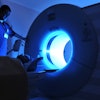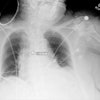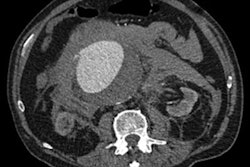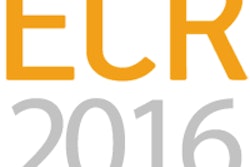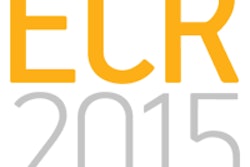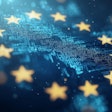
The teleradiology white papers of the European Society of Radiology (ESR) and American College of Radiology (ACR) differ in some respects, but they both stress the importance of always keeping the patient's needs first and foremost, according to analysis published in the February issue of the Journal of the American College of Radiology (JACR).
The ESR and ACR documents -- published in January 2014, and August 2013, respectively -- also had common ground with regards to maintaining quality and the role of teleradiology as a supplementary tool for local services, noted a team led by Dr. Erik Ranschaert, staff radiologist at the Jeroen Bosch teaching hospital, s-Hertogenbosch in the Netherlands.
"The major differences between the white papers are related mainly to the market situation, the use of teleradiology, teleradiologist credentialing and certification, the principles of 'international' teleradiology, and the need to obtain 'informed consent' from patients," the authors wrote.
 The ACR and ESR have issued white papers on teleradiology.
The ACR and ESR have issued white papers on teleradiology.The authors included Dr. Giles Boland of Massachusetts General Hospital, Dr. Andre Duerinckx, PhD, of Howard University Hospital in Washington, DC, and Dr. Frits Barneveld Binkhuysen of Diagnostiek voor U in Eindhoven, the Netherlands. They set out to assess the similarities and controversies of the white papers and to describe them in the context of the political, economic, and legal evolutions underway in Europe and the U.S. (JACR, February 2015, Vol. 12:2, pp. 174-182).
Much in common
Both papers emphasize that patient primacy should be the principal objective of teleradiology.
"The ACR stresses that 'secondary incentives, financial or other, should never supersede the patient primacy,' " they stated. "Similarly, the ESR paper opines that pricing should never be the principal basis on which decisions to outsource using teleradiology are made."
The ESR and ACR advocate for teleradiology to be utilized as a supplemental service for on-site radiology practices, "but if implemented, teleradiologists should meet the professional standards and quality and safety procedures of the 'local' hospital or radiology practice, in addition to undergoing the usual medical staff credentialing and privileging process," they wrote. "Both organizations also favor the maintenance of high professional quality standards that are similar for both teleradiology providers and on-site radiologists."
Because each organization is concerned about the risk of commoditization of radiology services that threaten the specialty, the two white papers promoted the full integration of teleradiology within local radiology services. The papers also highlighted the importance of relevant prior imaging studies and related patient information for the practice of teleradiology.
"Both the ESR and ACR believe that seamless access to this information should be available to facilitate high-quality imaging interpretations," stated the authors.
A few differences
The "concept" of teleradiology was among the notable differences between the two white papers. The ACR white paper focused on the use of teleradiology for outsourcing purposes, while the ESR white paper took a broader approach, "in which images can be transmitted either within a network belonging to a hospital group, or geographic region, or outsourced to private teleradiology providers."
Teleradiology in the U.S. is most often associated with off-hour preliminary readings -- also known as nighthawk services -- and more recently, with daytime outsourcing, according to the researchers. In Europe, however, teleradiology covers a spectrum of services.
"When the daily workload is too heavy for the local radiology team, teleradiology can be used for 'overflow' interpretation purposes," they wrote. " 'Backlog reporting,' in contrast, is the use of teleradiology for residual work lists (mostly containing nonemergency routine radiologic examinations). In contrast with the United States, most teleradiology readings in Europe are final interpretations, even when performed off-hours."
The authors also observed that while Europe has not experienced the same level of growth in teleradiology that the U.S. has over the last 10 years, that dynamic may be changing. A shift is underway from "preliminary to final interpretations, as some hospitals are cutting the subsidies provided to radiology groups that off-sourced off-hour work."
In the U.S., the teleradiology market is in the midst of major changes, due to a variety of factors such as a shift from teleradiology companies providing preliminary reads to final interpretations. Hospitals, radiology private practices, independent diagnostic testing facilities, and other customer groups are now taking a new look at how they can utilize professional teleradiology services.
"Hospital executives are becoming reluctant to pay the subsidies that radiology practices have earned to cover preliminary night interpretations by teleradiology companies, which leaves them the options of bringing the off-hour interpretations in house or having the teleradiology groups do final interpretations," they wrote. "The market's move to 100% final interpretations currently remains limited, however, by some factors, such as the inability of many IT solutions to seamlessly integrate and to accommodate bidirectional information exchange. In addition, the disappearance of high volumes of overreads in the morning could also result in overstaffing of many practices, which makes them hesitate to follow this trend."
Outsourcing hasn't caught on yet in Europe, however. Most teleradiology is currently being performed not by private firms, but internally within different locations of the same hospital or hospital group, according to the group. In contrast with U.S. radiologists, a large majority of radiologists have positive views on the future of teleradiology, the authors noted.
Growing market penetration?
On the surface, the growing importance of telemedicine and recent European Commission actions would suggest an increase in European teleradiology market penetration that could near U.S. levels. However, the situation is more complex than that, as the "application of new European directives and regulations is heavily affected by local politics and legislation."
"Cross-border (international) collaboration remains a particular challenge because of the existence of different reimbursement systems and various local requirements regarding medical registration (licensing) within each member state," they wrote. "This situation is more or less comparable with the licensing and payer contracting obstacles witnessed among states in the United States."
Language barriers remain a significant barrier to proliferation of teleradiology to different countries in the EU.
"The teleradiologist should deliver unequivocal reports in the local language where the patient resides, which should also be part of the contractual agreement between the involved parties," explained Ranschaert et al. "In the future, the use of an international lexicon, standardization of terminology, structured reporting, and the use of translation software may help overcome the language barriers witnessed in international teleradiology in Europe."
An inhomogeneous digital infrastructure can also be a limiting factor for cross-border teleradiology in the EU. While PACS may be relatively scarce in some EU member states, implementation may be widespread in others.
"In the United Kingdom, the Nordic countries, and Germany, many of these PACS are now connected to regional or even national networks, and therefore teleradiology is prevalent in these countries for both insourcing and outsourcing purposes," they wrote.
Incentives for utilization of teleradiology also vary considerably among the EU member states, according to the researchers.
Notably, the ACR white paper focuses on domestic teleradiology (i.e., within the U.S.) while the ESR white paper addresses international teleradiology within EU borders.
Licensing/patient consent
In a position that's consistent with the EU's legal framework, the ESR believes that teleradiologists must comply with authorization and registration requirements in their countries of residence, but not with the registration requirements of the patient's member state. In the U.S., however, teleradiologists almost always have to be licensed in the state where the imaging study is being performed. The authors also noted the recent interstate compact recently promulgated by the Federation of State Medical Boards that aims to facilitate a more efficient process for licensing physicians interested in practicing telemedicine. While the interstate compact still needs to be endorsed by all states, it "is gaining momentum and may become reality in some states by 2015," the authors wrote.
While the ACR does not address the issue of informed consent in its teleradiology white paper, the ESR has highlighted the importance of fully informing patients on the qualifications of teleradiologists if their images are being sent elsewhere -- especially to another country -- for interpretation.
"In addition, the ESR recommends in its white paper that contractual language be present as to whose responsibility it is for each step of the examination and diagnostic pathway, mainly for reasons of patient safety," they pointed out.
The ACR teleradiology task force noted the importance of educating ACR members on increasing their noninterpretive services within their hospitals in order to ward off predatory teleradiology business practices. Also concerned about the risks of increasing commoditization of radiology, the ESR in its white paper promotes the use of teleradiology as a "well-integrated add-on to local services, not as a replacement." In addition, the ESR advises members to obtain the European Diploma of Radiology as a means of harmonizing knowledge and competencies across Europe and to spur international collaboration among European radiologists.
While the ACR stressed the importance of communicating critical test results in its white paper and noted the importance of audit trails for documentation in the finalized radiology report, the ESR was a little more circumspect in its paper, commenting that "protocols regarding communication of urgent findings need to be established." The authors concluded, however, that the ESR does have guidelines for communication of urgent and unexpected findings.
